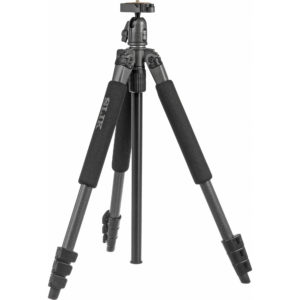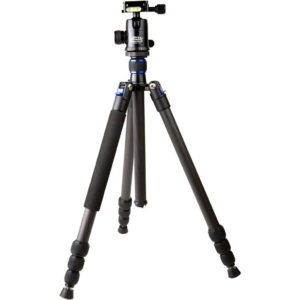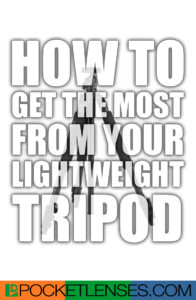 I love to carry a lightweight tripod. Tripods provide you not only with stability to help you get those tack sharp photos, but also the versatility of a platform that allows YOU to get into your group shots. Tripods are great, but I hate lugging a heavy one around. It’s for this reason that I usually carry my lightweight model (see my recommendation here) when I bring tripod along.
I love to carry a lightweight tripod. Tripods provide you not only with stability to help you get those tack sharp photos, but also the versatility of a platform that allows YOU to get into your group shots. Tripods are great, but I hate lugging a heavy one around. It’s for this reason that I usually carry my lightweight model (see my recommendation here) when I bring tripod along.
In general, heavier and “beefier” tripods will be more stable and transmit less vibration than lightweight flimsy ones, but that doesn’t mean you can’t get stunning images with a lightweight tripod. You just need to know what you’re doing.
Because my lightweight model is the one I most often use, I’ve learned a few things that I thought I’d share with you: How to get the most out of your lightweight tripod.
BEST TIP: Don’t raise the tripod any higher than you need to. If you can, keep it down low. Many people shoot from head height because of convenience. Keep it low and squat if you need to. It might be uncomfortable, but remember, it’s for the sake of a vibration free image! Just because your tripod can stand tall, doesn’t mean you should set it up that way. Personally, I think low down shots make some of the most interesting images anyhow. Put an interesting subject in your foreground and compose it into the shot.
Never raise your center column UNLESS stability and the effect of vibration is not an issue. For example, on a bright day with a fast shutter speed, you might use your tripod just to mount the camera at chest level so that you can also get in the picture with a group of friends. This serves a different purpose than when you are doing a long exposure or slow shutter speed shot and want stability.
 Make sure all of your movable “connection” points are locked down. Reduce all the wiggle that you can. Legs, center column, mounting plate, etc.
Make sure all of your movable “connection” points are locked down. Reduce all the wiggle that you can. Legs, center column, mounting plate, etc.
Block the wind. Wind is one of the biggest contributors to vibration. Block the tripod from the wind with your body when you can. Even a small breeze can cause a lightweight tripod to vibrate.
Make sure you don’t have straps and cords flapping around in the breeze. The stability of your tripod will be quickly compromised if you’ve got these wind catchers wiggling your camera.
Bring a bit of string along (I use paracord as well as a simple carabiner) and weigh down your tripod by hanging your photog bag from the center column. (of course don’t let your bag swing). Many tripods have a built in hook just for this purpose.
In many cases, with the techniques above, you can craft the same exact, tack sharp images with a lightweight tripod that you can with a heavy bulky one. The main difference is that if your tripod is lightweight and nimble, you’ll more likely bring it with you, use it more often and “get the shot”!



No comments yet.